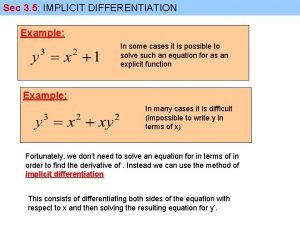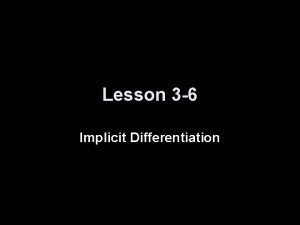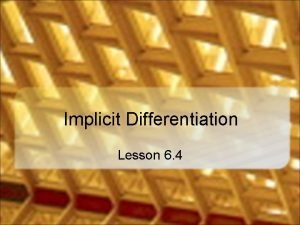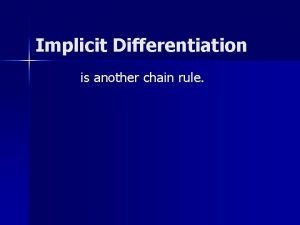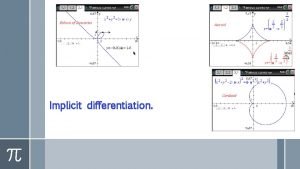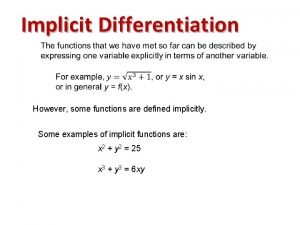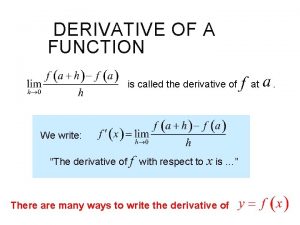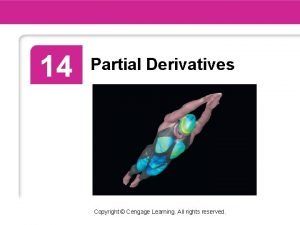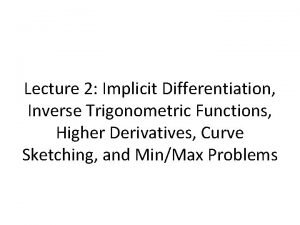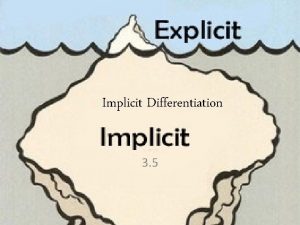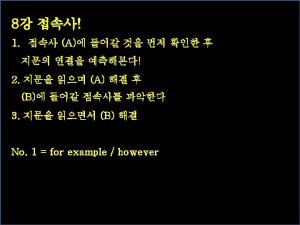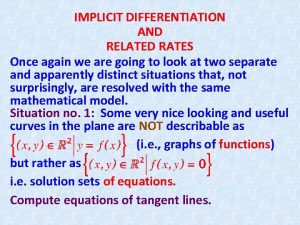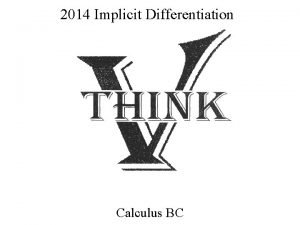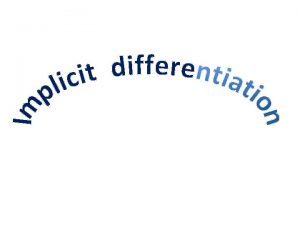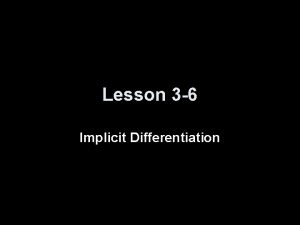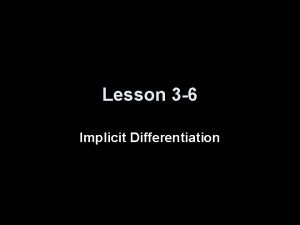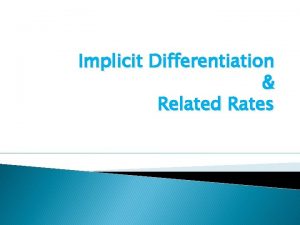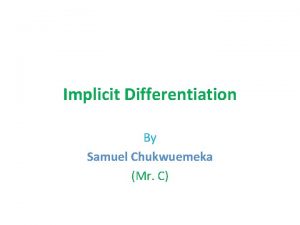Topics in Differentiation Implicit Differentiation SECTION 3 1












- Slides: 12

Topics in Differentiation: “Implicit Differentiation” SECTION 3. 1

All graphics are attributed to: Calculus, 10/E by Howard Anton, Irl Bivens, and Stephen Davis Copyright © 2009 by John Wiley & Sons, Inc. All rights reserved.

Topics in Differentiation We are now going to differentiate (take the derivative of) functions that are either difficult to differentiate in y= form (defined explicitly) or impossible to write in y= form and “differentiate directly”. Therefore, we need new methods such as implicit and logarithmic differentiation to find these derivatives in another and/or faster way.

Explicit vs. Implicit For more information on the difference between explicitly and implicitly defined, please read pages 185 -186. In general, it is not necessary to solve an equation for y (in terms of x) in order to differentiate a function. On the next slide, I will take the derivative of a relatively easy function two different ways so that you can see the difference.

Example Two Ways

Example Results We got the same answer using both methods. Solving for y was obviously much faster, but it is not always possible to solve for y first (see example on next slide). Now we know another method. Differentiate “implicitly” Solve for dy/dx Then substitution

Example Where We Cannot Solve for y First

Explanation of y’ = dy/dx When we take the derivative of 5 x, we are actually using the Chain Rule without realizing it. We take the constant 5*1 (which is the power)*x 1 -1 *the derivative of the inside (x) = 5*1*x 0 *1=5*1*1*1 = 5. What we have not discussed is the fact that d/dx[x] =dx/dx =1 because multiplying by one does not affect the outcome of the derivative. When we do the derivative of y, it is different because the variables do not match. Therefore, we do not get 1 and it does affect the outcome. d/dx[y] = dy/dx = y’

Second Derivative Example

2 nd Derivative Example (cont. )

Slope Example Using Implicit Differentiation

Sorry and Shamu(s) @ Sea World Sorry the example on slides #9 & 10 was so long. You said you wanted me to do more difficult problems.
 Implicit derivatives
Implicit derivatives Rules of implicit differentiation
Rules of implicit differentiation Implicit differentiation
Implicit differentiation Implicit differentiation vs chain rule
Implicit differentiation vs chain rule Explicit differentiation
Explicit differentiation Implicit derivative matlab
Implicit derivative matlab The derivative of a function
The derivative of a function Implicit partial differentiation
Implicit partial differentiation Implicit differentiation with inverse trig functions
Implicit differentiation with inverse trig functions Implicit differentiation vs explicit
Implicit differentiation vs explicit For example 접속사
For example 접속사 Implicit differentiation and related rates
Implicit differentiation and related rates Cultural o
Cultural o
